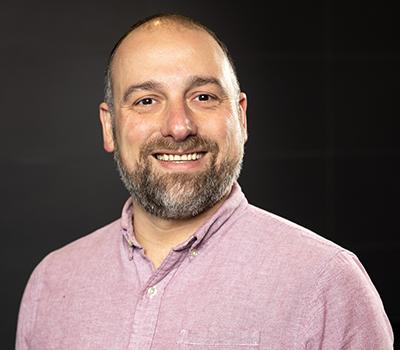A smart compost bin being developed at Oregon State University could help to make a dent in a multibillion-dollar problem: More than one-third of all food produced in the U.S. goes uneaten. “At every other step of the agricultural supply chain, food waste is tracked, measured and quantified,” said Patrick Donnelly, assistant professor of computer science, who is leading the project. “However, approaches to measuring post-consumer food waste are costly, time- intensive, prone to human error and infeasible at a large scale.”
Donnelly and his colleagues, Jason Clark of the College of Engineering and Quincy Clark of the colleges of Agricultural Sciences and Education, aim to create a kitchen compost container that automatically measures household food waste.
“We’re adapting our design to accommodate consumers’ current behavior, using compost bins commonly distributed by waste utilities as a template,” Donnelly said. “When a user disposes of edible and nonedible food waste in the bin, our device prompts the user to describe the deposited items. The user’s note is then transcribed with automatic speech recognition and associated with a weight measurement of the items.”
“We’re adapting our design to accommodate consumers’ current behavior, using compost bins commonly distributed by waste utilities as a template,” Donnelly said. “When a user disposes of edible and nonedible food waste in the bin, our device prompts the user to describe the deposited items. The user’s note is then transcribed with automatic speech recognition and associated with a weight measurement of the items.”
Additionally, he said, the device will collect 3D images and sensor measurements of the food waste, resulting in an “entirely novel dataset to enable and encourage future researchers to tackle the problem of food waste measurement with computer vision.”
This research is supported by $640,000 in funding from the Foundation for Food and Agriculture Research and the Kroger Co. Zero Hunger Zero Waste Foundation. In the United States — a country in which more than 10% of households are food-insecure — more than $400 billion worth of food is wasted per year, on average. Aside from economic inefficiency and the moral disaster of discarding food while many people go hungry, Donnelly said, that waste generates significant amounts of the greenhouse gases carbon dioxide and methane.
“There’s a familiar adage: You can’t manage what you don’t measure,” Donnelly said. “Our goal is to inspire future waste reduction by specifically quantifying, measuring and tracking the amount of food that home consumers send to compost.”
Researchers plan to run a small pilot study in spring 2024.
"After we design the device, we will distribute them to study participants,” Donnelly said. “The purpose of the preliminary study is to test the technology and collect measurements and images for a data set.”
At present, this type of research is performed by small groups of participants manually weighing food waste and recording the measurements in a journal, Donnelly said.
“Our solution would fully automate this process, enabling researchers to collect this data more accurately and efficiently,” he said. “Our work is a first step toward developing a fully autonomous, computer vision solution that would enable households to track the amounts and types of food compost waste they generate. With these personalized and data-driven interventions, we hope to inspire consumers to reflect upon and change their behaviors with respect to food waste over time.”
Donnelly is already exploring several applications for the nascent technology. Cafeterias, such as those in hospitals and schools, can use this technology to learn more about what and how much people are actually eating off their plates. Donnelly’s food sensor can tell if a higher volume of certain kinds of food is being sent to the waste bin more often than others. If customers are only eating half of their cornbread, for example, cafeteria staff can decide to serve smaller pieces.
Donnelly’s food sensor technology can also be applied to a meal before it’s served. Algorithms can examine images of a person’s plate to figure out what people are putting on their plates and estimate the total nutritional content, which can be logged and tracked over time. This could be especially important in hospital settings where it’s critical that patients receive proper nutrition. Adding a QR code to hospital cafeteria plates would mean pre- and post-dining images could be compared to help figure out each patient’s nutrition intake throughout the day.



